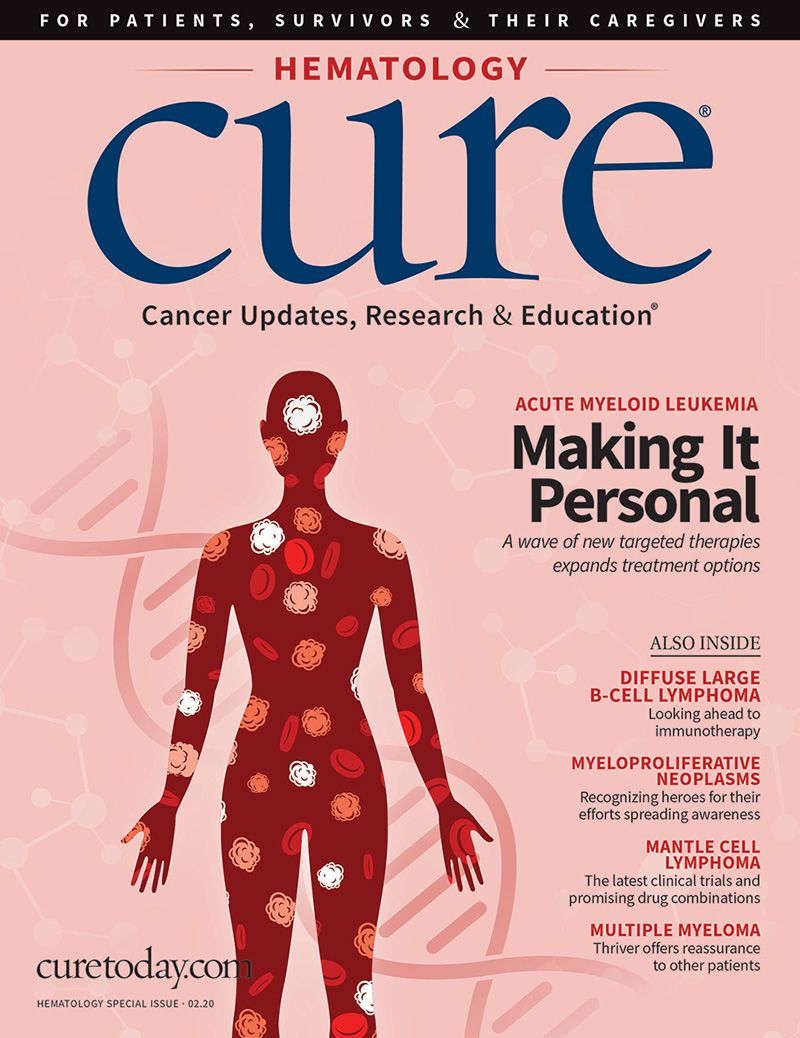Remission Drives Ambition: Experts Look to New Methods in AML Treatment
Targeted therapies have changed the landscape of cancer care, and now, hope for remission is a possibility for certain patients with acute myeloid leukemia with new approved therapies.
As we look back on the history of acute myeloid leukemia (AML), it is clear that the most crucial step involves getting patients with the disease into complete remission. Clearing the bone marrow of leukemia cells, thus improving remission rates, quickly became the goal of both scientists in research labs and oncologists who are on the front line of treating patients. Induction treatment that yields remission is followed by consolidation to, hopefully, lead to a long-term cure.
Interestingly, the induction medications that decades ago were found to achieve that remission remain relevant and effective. The protocol for the initial treatment for many patients hasn’t changed much. But researchers and other health care professionals recognized that as medicine became more sophisticated — understanding cytogenetics, looking at cells under a microscope and, later, developing molecular techniques — some patients had a more difficult time achieving remission. Scientists understood that without that remission or relapse after remission it was a bad sign.
At that point, researchers discovered different translocations and mutations involved in this disease state. With next-generation sequencing, scientists can identify a plethora of mutations that are associated with worse remission rates and determine how effective a new treatment might be for a patient. For instance, patients with specific genetic alterations in their leukemia cells may receive the modified induction therapy with standard chemotherapy plus biological agents. Other cases might call for different consolidation approaches.
As knowledge, biology and sequencing techniques expand, new targeted drugs have been developed to achieve this first remission in certain patients with AML. In this special issue
of CURE®, a feature story breaks down the latest therapies approved for patients with AML over the past two years — eight innovative options in total. Read how this emergence of targeted therapies has helped patients such as Heather Hibbard. At 37, Hibbard noticed some bruising while on vacation; upon her return home, she went to the doctor, who in just over a week confirmed an AML diagnosis.
Genomic testing revealed a FLT3 mutation, which meant she was a candidate for Rydapt (midostaurin), the first targeted therapy for AML approved in 2017. The medication became part of her treatment regimen, in addition to chemotherapy and stem cell transplant. Two years later, she remains cancer free.
Stories like Hibbard’s motivate the men and women working behind the scenes to keep looking for the next cutting-edge medication that will extend the lives of people battling not only blood cancers but all cancers.
The creation of better tools, such as blood and bone marrow tests, allows medical professionals to monitor for recurrence early before patients clinically recur, so they can be treated ahead of the curve.

Patrick Swayze’s Widow Reflects His Cancer, Demi Moore Speaks About Breast Cancer and More
April 12th 2024From Patrick Swayze’s widow recalling his pancreatic cancer diagnosis to Demi Moore speaking about her aunt’s courage during cancer, here’s what’s going on in the oncology space this week.
Read More